When cultivating broccoli, understanding the diverse array of insects that can potentially infest your crops is paramount to ensuring a successful harvest. Among the myriad pests that plague broccoli plants, a variety of bugs pose significant threats to their health and productivity.
From the notorious cabbage loopers to the elusive diamondback moth caterpillars, the presence of these insects can spell trouble for broccoli growers.
In the article, we learn about 13 types of bugs in broccoli, explore their characteristics, behaviors, and the necessary measures to minimize their impact on this beloved cruciferous vegetable.
Different Types of Bugs in Broccoli
Cabbage Root Maggots
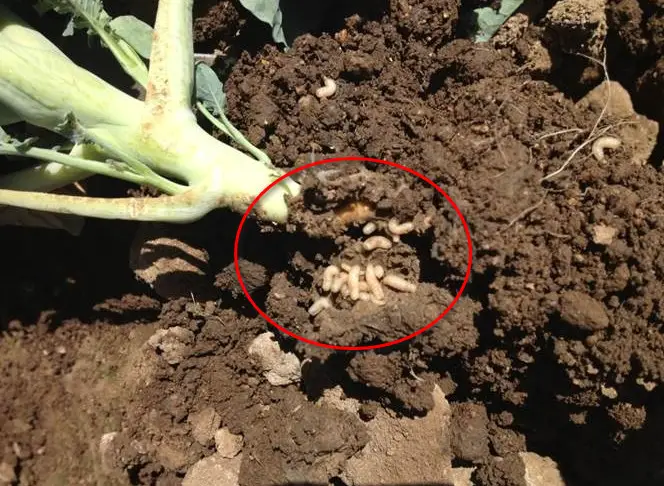
Cabbage root maggots are the larvae of cabbage maggot flies, which are small, grayish flies resembling houseflies. The maggots themselves are legless and white, with pointed heads and tapered bodies. They typically infest the roots of cabbage plants, burrowing into the soil to feed on the roots, which can lead to stunted growth, wilting, and eventual plant death. While the maggots themselves are difficult to spot due to their subterranean feeding habits, the damage they cause manifests as wilting or yellowing of the cabbage plants above ground.
Cabbage root maggots pose a hidden threat as they feed beneath the soil, making both their larvae and the resulting damage challenging to detect. Young seedlings are particularly susceptible to their ravages, while established, healthy plants are more resilient.
Traditional pesticides are ineffective against these pests, making prevention crucial. Avoid over-fertilizing with manure, as it attracts adult cabbage maggot flies seeking egg-laying sites. Opting for robust seedlings rather than direct seeding can also deter infestations, bolstering your defenses against these underground adversaries.
Cabbage Webworms
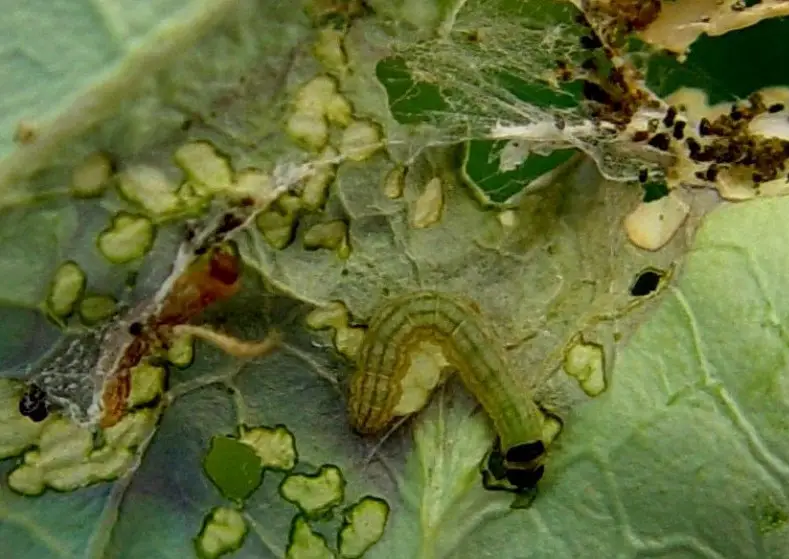
Identifying cabbage webworms is straightforward throughout their larval phases. Sporting yellowish-grey to tan bodies and distinctive black heads marked with four brown stripes along their length, they’re easily distinguishable.
These voracious larvae target broccoli buds, growing tips, midribs of leaves, stems, and stalks, constructing webs to shield their feeding zones.
Early intervention with Bacillus thuringiensis is advised to curb their population. Nonetheless, excessive use may provoke resistance in these pests, emphasizing the importance of judicious application.
Cross-Striped Cabbageworms
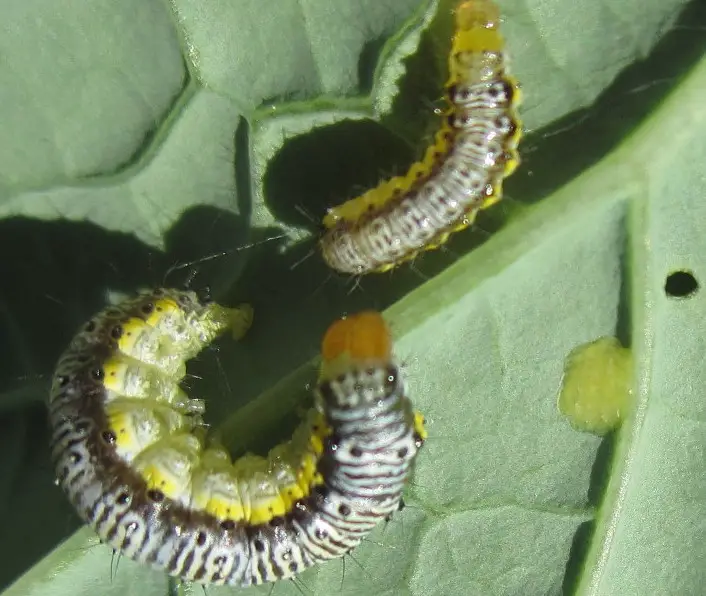
Cross-striped cabbageworms, identifiable by their black and white striped bodies adorned with yellow lines along each side, wreak havoc by consuming broccoli leaves, leaving behind only the veins.
Employing floating row covers serves as a preventive measure, thwarting egg-laying females and denying larvae access to plants.
Additionally, manual removal of small infestations proves effective in curbing their population, ensuring the vitality of your broccoli crop.
Diamondback Moth Caterpillars
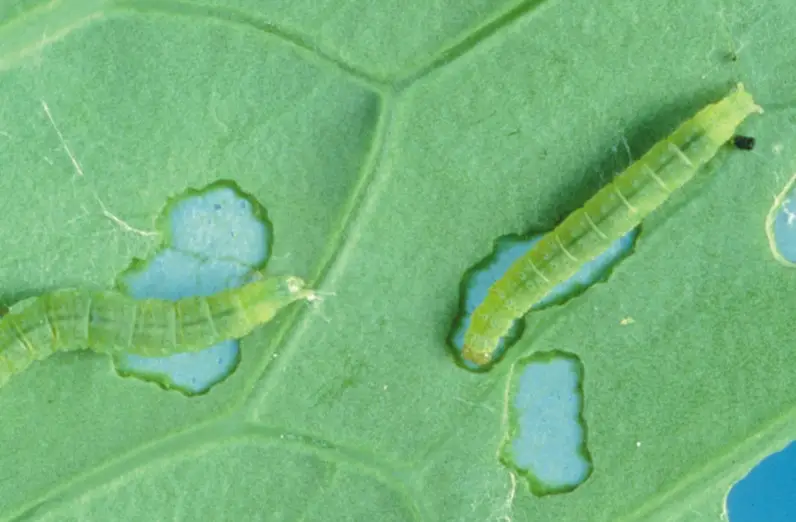
Diamondback moth caterpillars, measuring a mere one-third inch in length, distinguish themselves from their counterparts with their diminutive size and light-green hue. Their slender, tapered bodies further set them apart, making identification relatively straightforward. When threatened, these caterpillars exhibit rapid, erratic movements, often detaching from plants as a defense mechanism.
Interestingly, rainfall or overhead irrigation can prove fatal to these larvae. Despite their susceptibility to environmental factors, diamondback moth caterpillars have developed resistance to various insecticides, including Bacillus thuringiensis formulations.
Flea Beetles
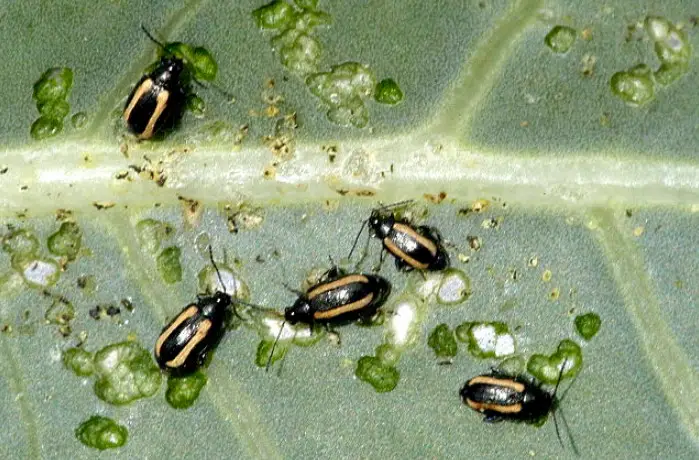
Cabbage flea beetles pose a persistent threat to broccoli crops, with both their whitish larvae and adult beetles causing damage. Recognizable by their small size and characteristic jumping behavior when disturbed, adult beetles chew numerous tiny holes in plant leaves. Young plants and seedlings are particularly vulnerable to their onslaught.
Managing a flea beetle infestation involves preventative measures such as covering seedlings with row covers until plants are established. While neem oil can provide short-term relief, its efficacy is limited due to the high mobility of flea beetles.
Harlequin Bugs
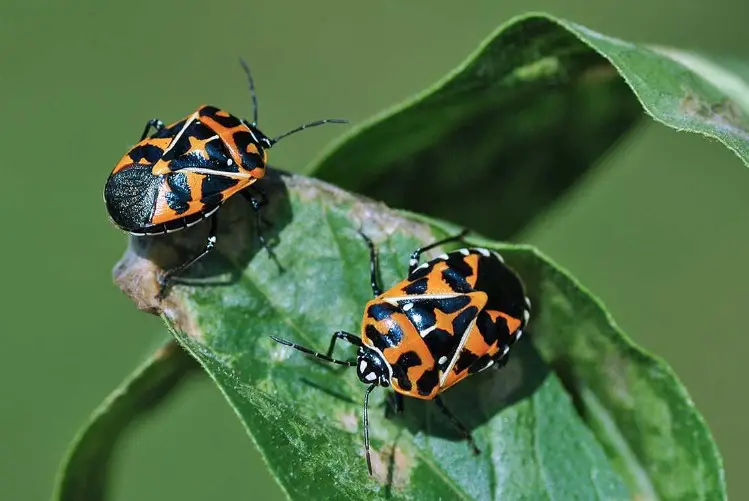
Harlequin bugs, resembling stink bugs in their shield-shaped form, sport striking black bodies adorned with vibrant red, yellow, or orange markings, measuring 3/8 inch in length. Feeding on plant fluids, these bugs leave behind yellow or white blotches on damaged areas, potentially causing wilting, browning, and even plant death with heavy infestations.
Combatting harlequin bugs requires non-chemical methods, as insecticides are ineffective. Manual removal by handpicking the bugs off plants is recommended. Since adults overwinter in soil and debris, thorough fall cleanup can disrupt their lifecycle, aiding in pest control come spring.
Imported Cabbageworms
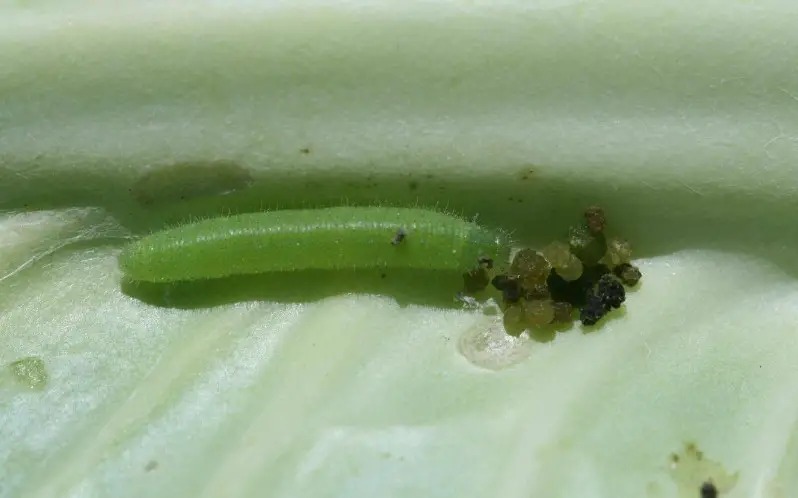
Imported cabbageworms, despite their small size, wield significant appetite, capable of decimating broccoli plants when present in large numbers. Their voracious feeding habits hinder the formation of broccoli heads in early plant stages and, if heads have already formed, they burrow into them. Mature larvae, measuring up to 1 inch long, sport green bodies with distinctive yellow stripes along their backs and sides.
While these pests can devastate foliage if left unchecked, they have natural predators such as shield bugs, vespid wasps, and various bird species. Should their population surge, employing Bacillus thuringiensis proves effective in curbing their numbers, ensuring the health of broccoli crops.
Whiteflies
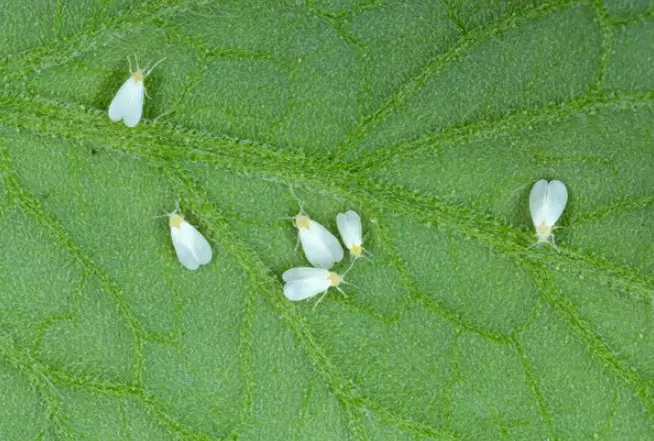
During warm weather, whiteflies can infest broccoli plants, posing a threat to their vitality. These sap-sucking insects weaken plants by piercing leaves and stems, leading to yellowing, shriveling, and premature leaf drop. With a new generation emerging approximately every three weeks, prompt control measures are crucial to prevent severe damage or plant demise.
Combatting whiteflies involves a multifaceted approach. Sticky traps can help monitor and trap adult whiteflies, while insecticidal soap and Neem oil provide effective treatment against both nymphs and adults, safeguarding the health of broccoli plants from this persistent pest.
Aphids

Aphids are small, soft-bodied insects typically found on the undersides of leaves or along stems of plants. They come in various colors such as green, black, brown, or pink, depending on the species. Aphids have pear-shaped bodies with long antennae and two tube-like structures, called cornicles, protruding from their abdomens. These cornicles secrete a waxy substance.
Additionally, aphids often cluster together, particularly on new growth, and may leave behind a sticky residue known as honeydew. Their presence can attract ants, which feed on this sugary secretion.
The sight of numerous ants crawling over your broccoli plants could indicate an underlying aphid infestation. These ants are drawn to the sweet, sticky “honeydew” secreted by aphids as they feed. Given their minuscule size, aphids often go unnoticed until their numbers escalate into an infestation.
Combatting them early is key; a forceful spray from a hose can dislodge small aphid populations. If they persist, a targeted application of insecticidal soap offers an effective solution, safeguarding your broccoli’s health.
Armyworms
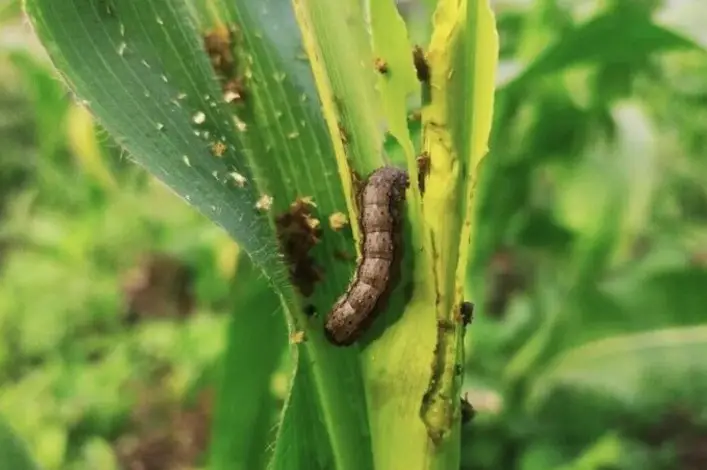
Armyworms, also known as army cutworms, are caterpillars that can cause significant damage to crops, particularly grasses and cereals. They are typically dark-colored with stripes along their bodies, although their appearance can vary depending on their stage of development. Armyworms are so named because of their tendency to move in large groups, resembling an army as they devour vegetation in their path.
Adult armyworm moths are night-flying insects with a wingspan of about 1.5 to 2 inches. They lay eggs in clusters on leaves or stems of plants. The larvae hatch from these eggs and feed voraciously, often causing extensive damage to crops if left unchecked.
Identifying armyworm infestations involves inspecting plants for signs of feeding damage, such as irregular holes in leaves or skeletonized foliage. Additionally, observing the presence of caterpillars, particularly in groups, can indicate the presence of armyworms. Taking prompt action to control these pests is essential to minimize crop losses.
Cabbage Loopers
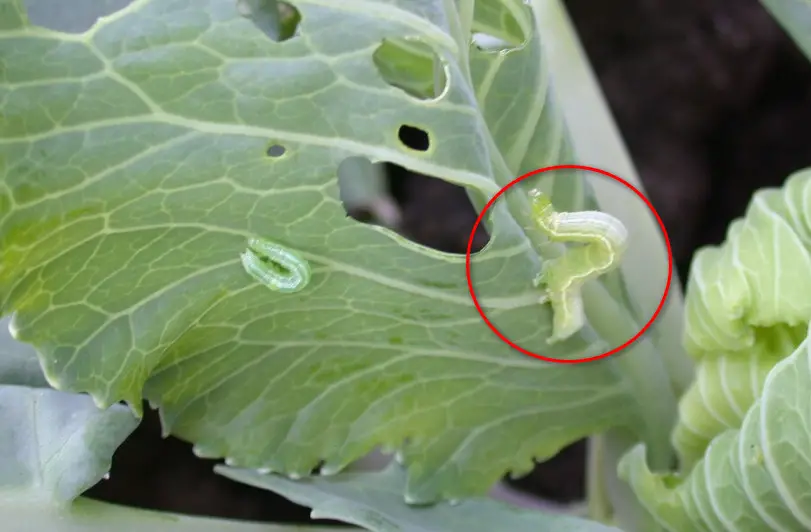
Cabbage loopers pose a threat to broccoli crops, with their larvae inflicting substantial damage. These pests measure approximately 1.5 inches in length, boasting a pale green hue adorned with thin white stripes along each side.
Their distinctive mode of locomotion—looping due to the absence of legs—inspired their name. Cabbage loopers exhibit a preference for older leaves, creating irregular holes, and may even penetrate cabbage heads.
Combatting them involves manual removal by collecting them in water-filled buckets or employing Neem oil treatments to deter their destructive appetites.






